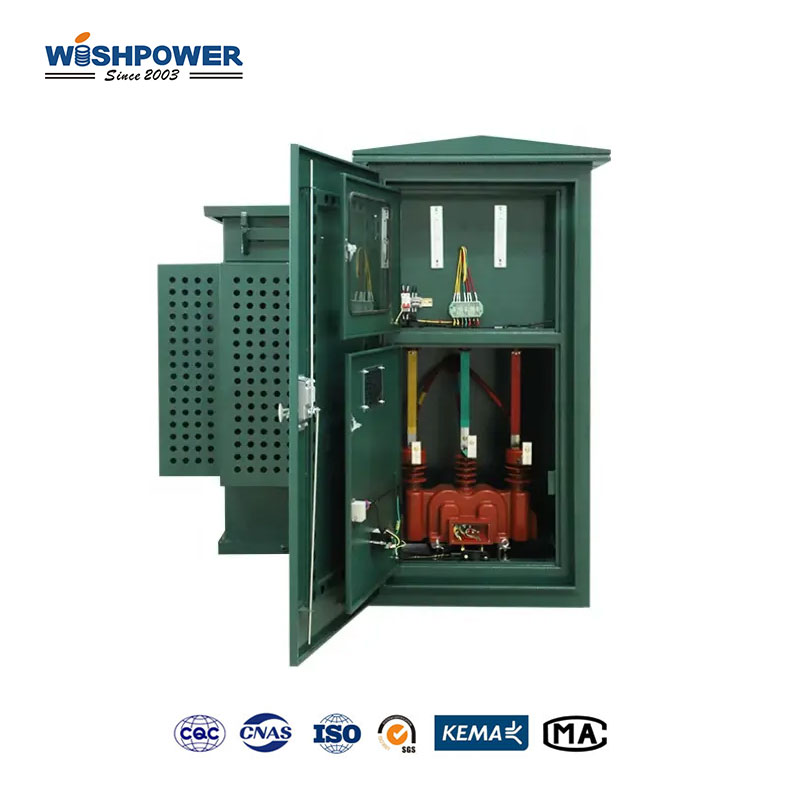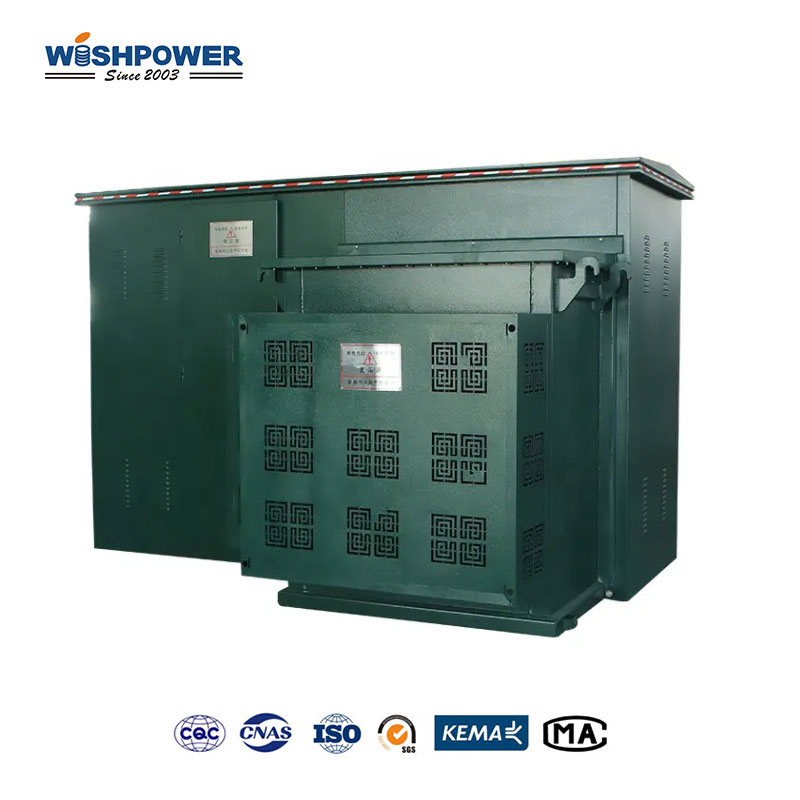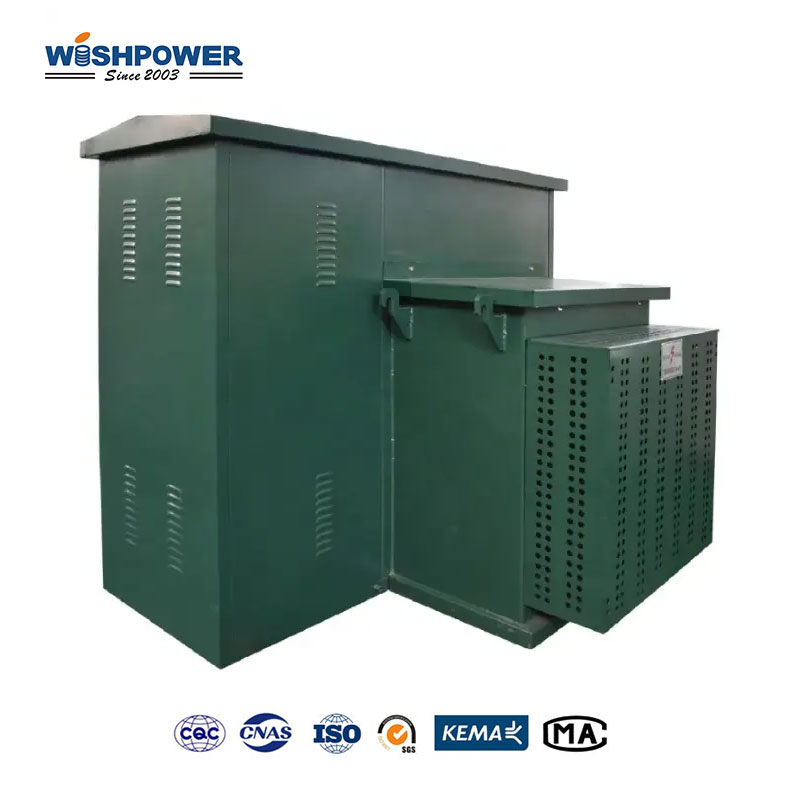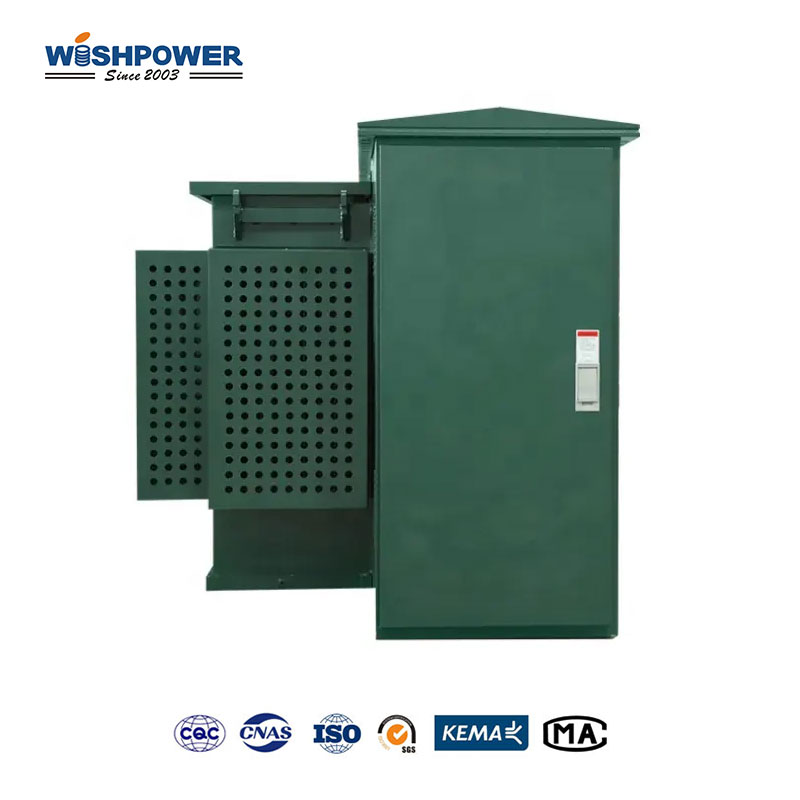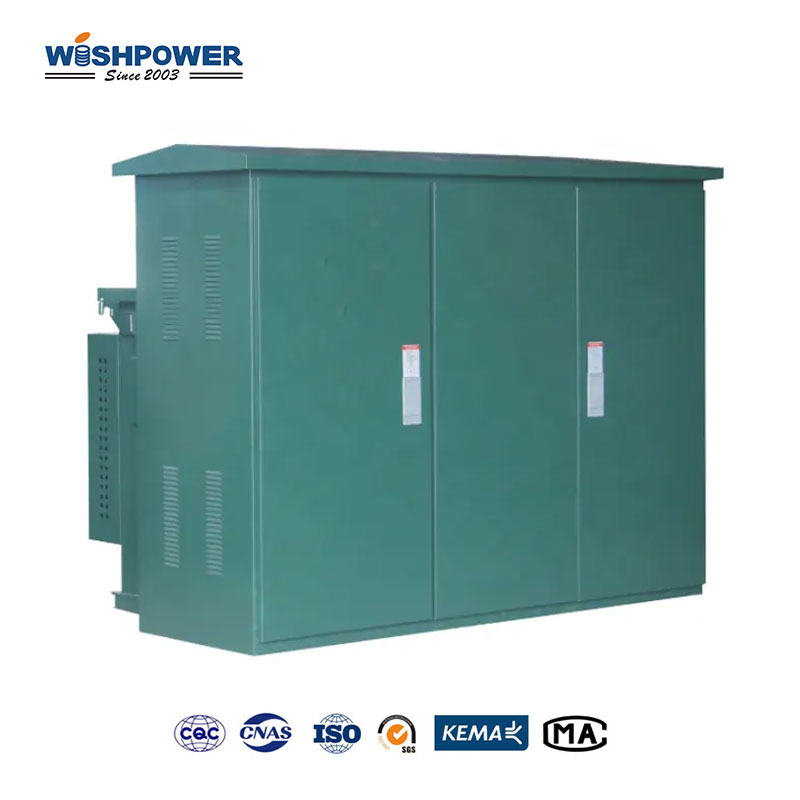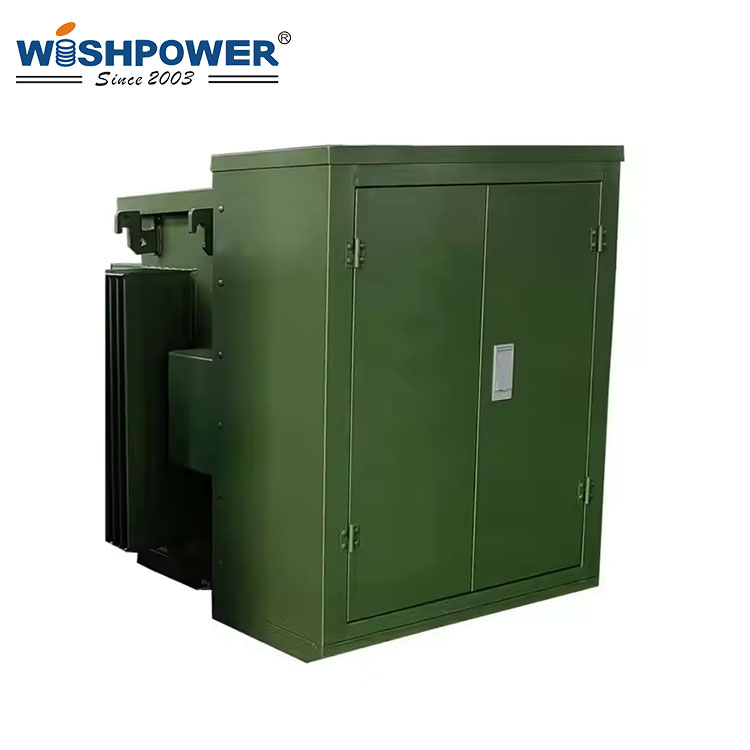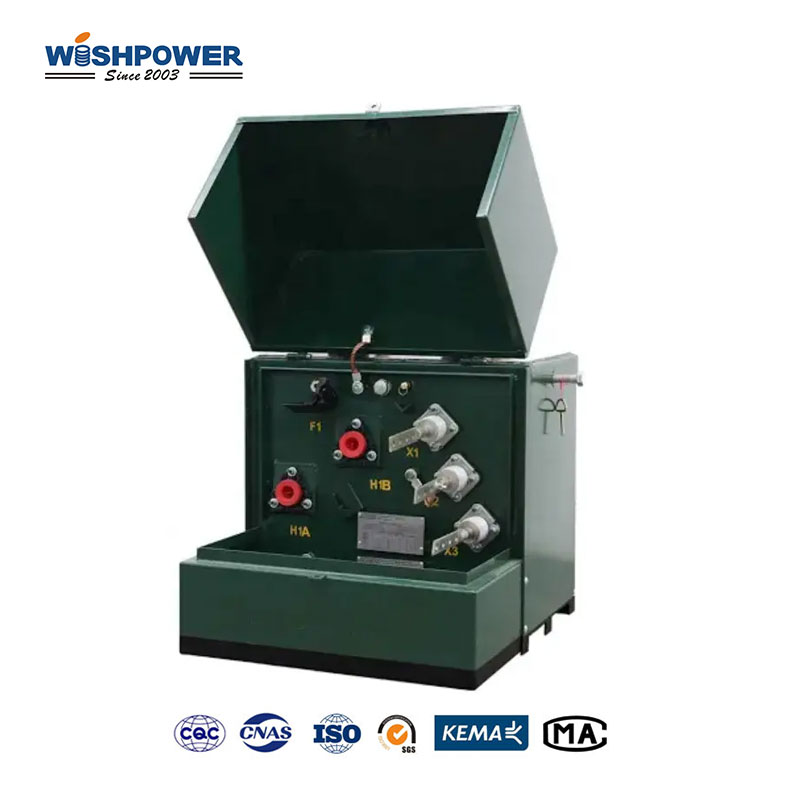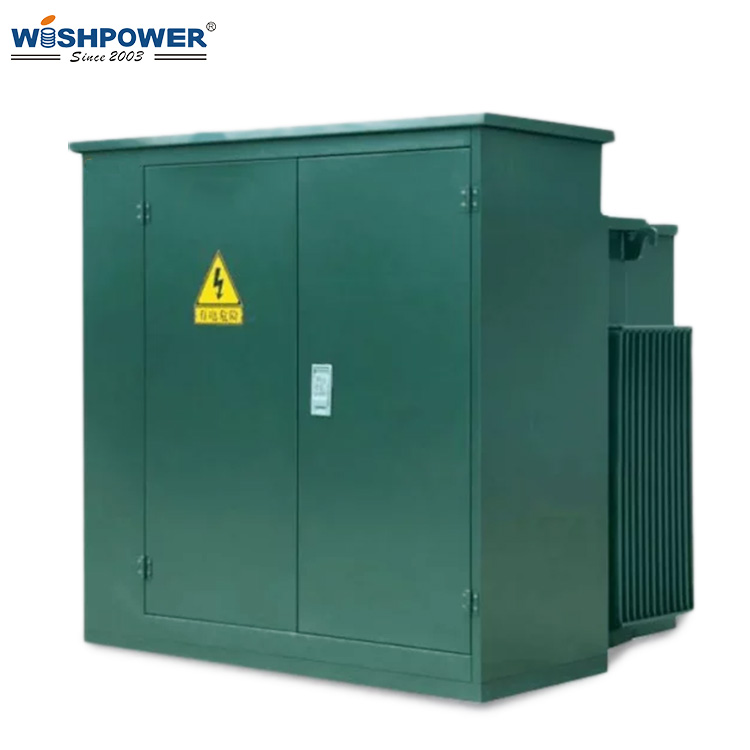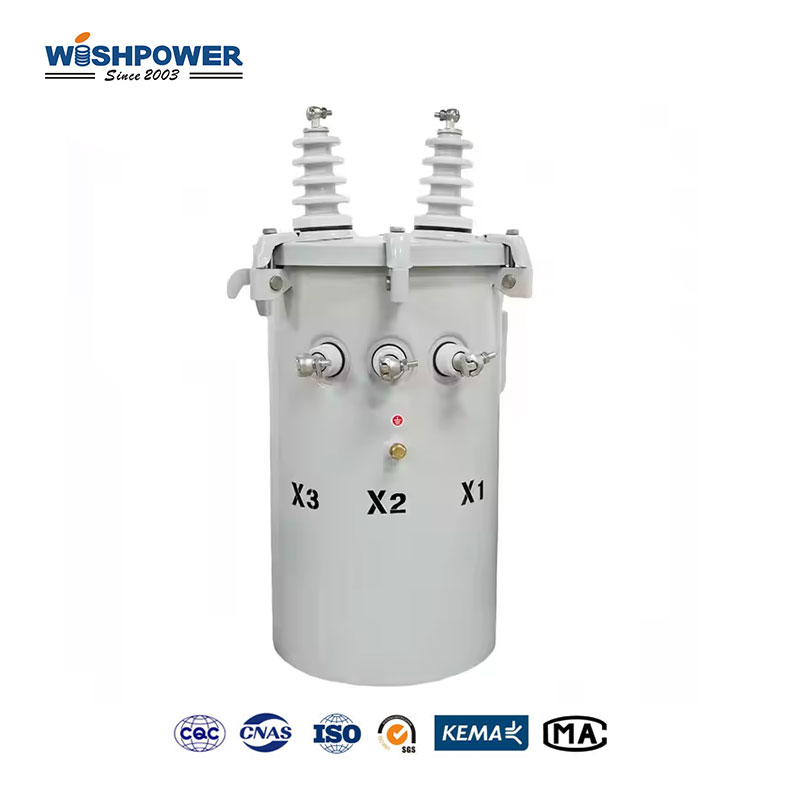Specification
| Primary Voltage (V) |
33000 |
| Model |
TR D3SP-15-33000-220y/127 |
TR D3SP-30-33000-220y/127 |
TR D3SP-45-33000-220y/127 |
TR D3SP-75-33000-220y/127 |
TR D3SP-112.5-33000-220y/127 |
TR D3SP-150-33000-220y/127 |
TR D3SP-225-33000-220y/127 |
TR D3SP-225-33000-220y/127 |
TR D3SP-300-33000-220y/127 |
| KVA Rating |
15 |
30 |
45 |
75 |
112.5 |
150 |
225 |
300 |
500 |
| No-Load Loss (W) |
90 |
126 |
170 |
240 |
315 |
360 |
520 |
660 |
1050 |
| Full Load Loss at 85°C (W) |
236 |
433 |
603 |
917 |
1273 |
1600 |
2402 |
3063 |
4481 |
| Total Losses at a load factor of 80% (W) |
241 |
403 |
556 |
827 |
1130 |
1384 |
2057 |
2620 |
3918 |
| 80% load for distribution transformers (Efficiency in % at 85°C) |
98.03 |
98.35 |
98.48 |
98.64 |
98.76 |
98.86 |
98.87 |
98.92 |
99.03 |
| Impedance (85°C) |
2.0~4.0 |
2.0~4.0 |
2.0~4.0 |
2.0~4.0 |
2.0~4.0 |
2.0~4.0 |
2.0~4.0 |
2.0~4.0 |
2.0~4.0 |
| Oil Weight (L) |
520 |
520 |
530 |
555 |
560 |
610 |
610 |
630 |
650 |
| Total Weight (KG) |
1500 |
1530 |
1560 |
1580 |
1750 |
1850 |
2180 |
2500 |
3100 |
| Dimension (mm) A |
2050 |
2050 |
2050 |
2050 |
2050 |
2050 |
2050 |
2050 |
2050 |
| B |
830 |
830 |
830 |
830 |
840 |
850 |
880 |
880 |
930 |
| ØD |
820 |
820 |
820 |
820 |
820 |
820 |
820 |
820 |
820 |
| H |
1900 |
1900 |
1900 |
1900 |
1900 |
1900 |
1900 |
1900 |
1900 |
| Winding Material |
AL-AL |
AL-AL |
AL-AL |
AL-AL |
AL-CU |
AL-CU |
AL-CU |
AL-CU |
AL-CU |
If you are interested in our transformers and related transformer accessories, please get more information and professional solutions through this website or directly through info@wishpower.net
What is the Outdoor Pad–mounted Transformer?
Outdoor pad-mounted transformer used for varying voltage distributions in medium to high-voltage underground power systems. This transformer is designed for reliability and safety in a weather-proof, tamper-resistant enclosure. It is an ideal outdoor installation in a residence area, industrial area, or commercial building. The pad-mounted is a part of the installation, whereby the transformer is set on a concrete pad for stability and protection from ground-level hazards. Its compact design and ease of maintenance make these transformers particularly valued. These also have several important features like high-quality bushings, load tap changers, and protective devices from burning beyond the rated capacity or short-circuiting. The design allows for safe utility workers and public safety and efficient and quick power distribution. Further, they are frequently enclosed tanks to keep out environmental waste contributors, and noise reduction technologies are included to keep noise levels low.
Market Trends
The Outdoor Pad-mounted Transformer is aimed at the North American market with its principal markets in the US and Canada. The transformer is an American Standard (ANSI) transformer and is commonly used by power utilities, municipalities, and commercial and industrial entities in urban, suburban, and rural areas. Named for their application to North American distribution systems in which the majority of lines have become or are migrating to underground power lines as a result of urbanization and the demand for more aesthetically pleasing, less prone to disaster infrastructure, these transformers are built with a specific purpose in mind. In particular, they are popular in populations where there are many people and little space, given that they offer a safe alternative to electric wires that take up space instead. These are often installed in residential areas, industrial complexes, commercial areas, and also on large campuses. Medium and high voltages are converted in these transformers so that they can step down to levels that can be used by local businesses, homes, or other facilities. In addition to their advanced safety features, these transformers are a top choice among utilities and electrical contractors undertaking distribution network construction and upgrading. The transformers in North America have been engineered to withstand a wide range of environmental conditions, including extraordinarily cold winters in the north, as well as heat and humidity further down in the South.
Differences from European standard transformers
There are numerous key differences between American and European transformers, all of which are the result of regional standards, environmental concerns, and infrastructure needs.
American transformers exist because they are designed and built with durability and especially outdoor weathering in mind, for use in outdoor environments such as pad-mounted or pole-mounted applications. Safety, tamper-resistance and (easy) access for maintenance are top priorities in these designs. Whereas the European transformers are more compact than American ones, that reflects the need for space efficiency in densely populated areas. The aesthetics of they’re often integrated into underground or substation sets up with focal on space efficiency.
The electrical specifications are quite varied. The standard American transformers run on 120/240 V and with a frequency of 60 Hz and it is compatible with North American grid standards. For example, European transformers run at 230V and 50Hz by European and world electrical standards. The voltage and frequency standards, however, differ because each region has a different power grid configuration.
The focus differs between the two regions when it is about safety but it has stringent standards. The robust protection features of American transformers include short circuit protection, grounding, and temperature sensors, as required by statutes such as the National Electrical Code (NEC). Being principally European and subject to European standards (IEC, EU, and Regulations), energy efficiency is spearheaded by energy loss and the emission of noise.
The two regions also diverge in energy efficiency. American ones have to be durable and cheap, whereas European transformers need to conform to European regulations on energy consumption and carbon emissions. Thus, European transformers are typically designed with more energy efficiency in mind, to minimize operation losses as well as to help the region fulfill its green energy target.
As do the installation methods. American transformers are often mounted above ground either on concrete pads or poles, usually in suburban and rural areas. However, this installation style is practical to use in those regions where space is not a big concern. On the other hand, European transformers are more often used underground in cities, and space is limited, it is easier to present design and use aesthetics as a priority. It allows transformers to be protected from the environment there while creating a better landscape.
However, the transformer design is also strongly influenced by the regulatory environment. The transformers used in the U.S. must meet both the DOE federal standards and local utility regulations, specifically with a focus on safety and grid reliability. In Europe all consumption appliances, including transformers are subjected to stricter regulations on energy efficiency lower environmental impact, and Ecodesign requirements which aim at reducing energy losses and improving the entire system performance impacts.
Certificate
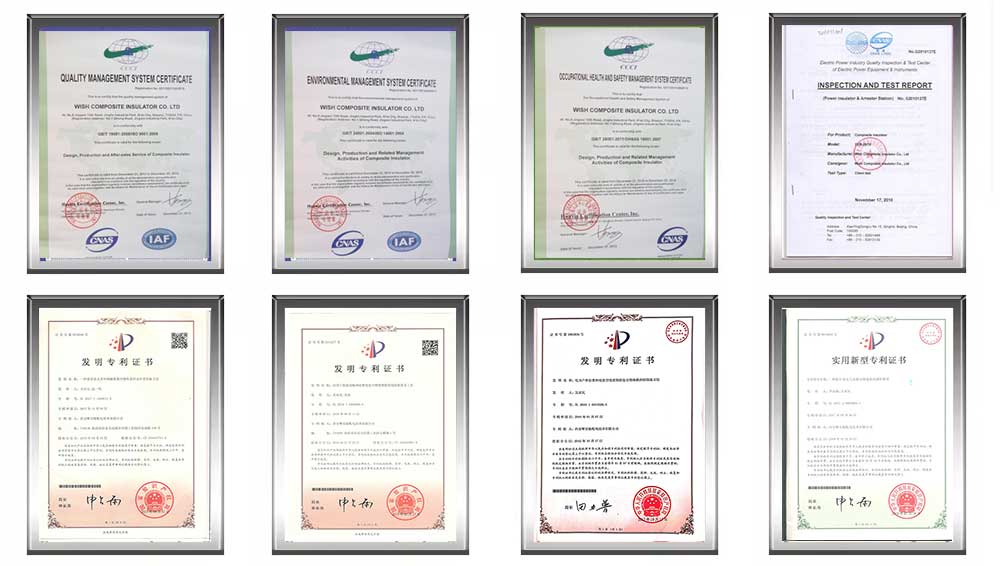
Factory
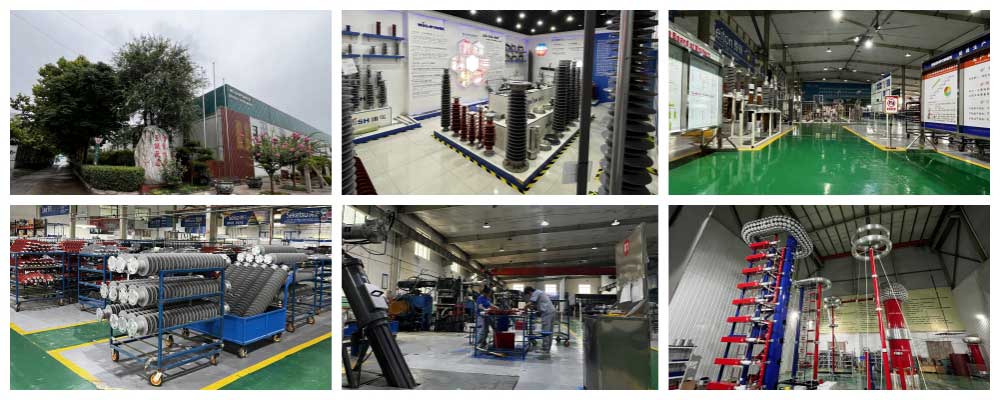
Hot Tags: Outdoor Pad-mounted Transformer, transformer, made in Thailand available, manufacturers, ISO factory, wholesale, KEMA, high quantity, best, price, low to high voltage














